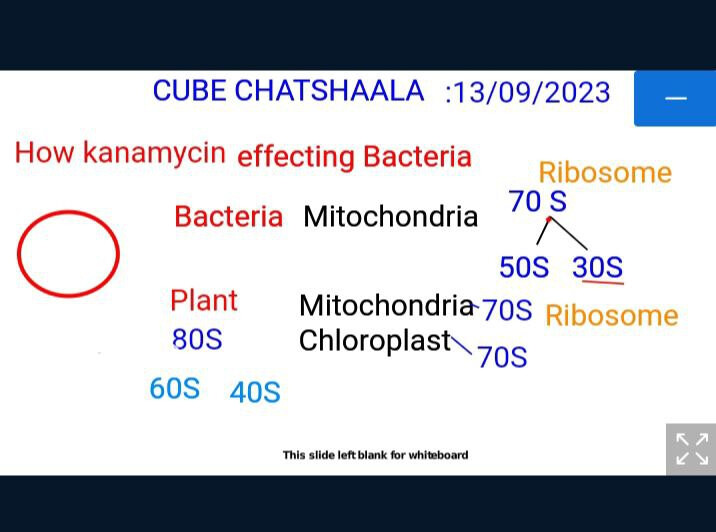Today we discussed how the Kanamycin affects the Cardamine, for this reason we first tried to understand how Kanamycin affects bacteria?
Kanamycin normally affects Mitochondria and Chloroplast.
Mitochondria of bacteria has 70S ribosome containing 50S and 30S subunits.
Whereas Plants have 80S ribosome containing 60S and 40S subunits.
Even in Mitochondria and Chloroplast there is genetic material such as DNA.
The question was how does Kanamycin affect the Mitochondria or Chloroplast.
@Shraddha276 explained, due to presence of DNA in Mitochodria and Chloroplast they make their own proteins, for which there is requirement of ribosomes.
Kanamycin interferes with these ribosomes and inhibit protein synthesis and inhibit cellular functions.
The Kanamycin can hence also affect plant ribosomes. The Kanamycin resistant gene if transfered in Cardamine seeds by floral dip method, then Kanamycin can act as a selective medium.
